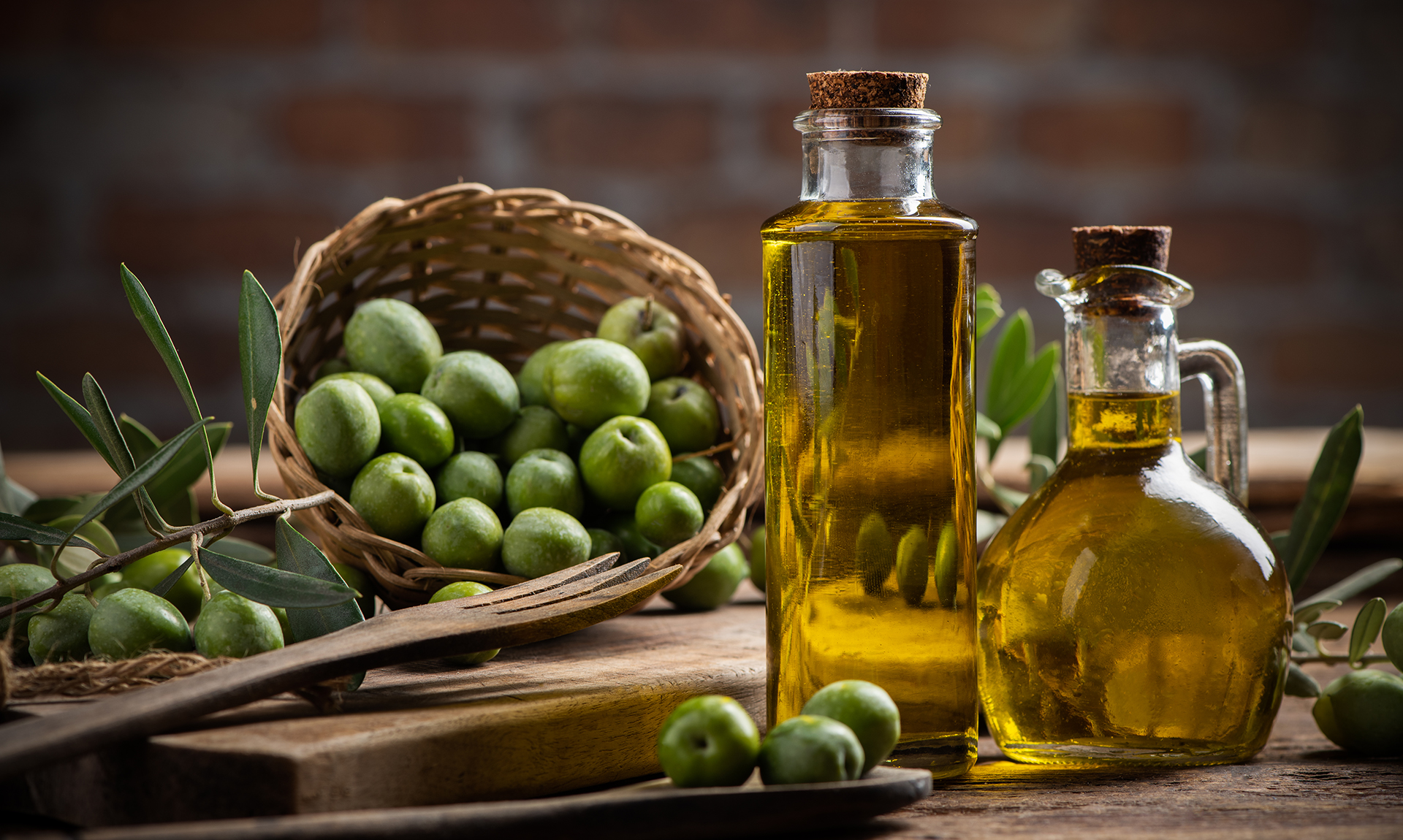
The Benefits of Extra Virgin Olive Oil
The Benefits of Extra Virgin Olive Oil
Extra virgin olive oil has become such a symbol of healthy eating that it is hard to believe that it was once accused of increasing the harmful cholesterol. It was a fat so it had to be bad for us!
Fortunately, we left those times behind and now olive oil and most fats are much better understood.
The main reason olive oil is healthy is because it is rich in healthy mono-unsaturated fatty acids. About 75% of that monounsaturated fat is oleic acid, which is very stable even at high temperatures. Moreover, our body processes oleic acid easier than other fatty acids.
Secondly, organic extra virgin olive oil also contains high levels of anti-oxidants like phenols, and vitamins E and A, which fight free radicals and thus prevent premature ageing.
Those antioxidants help neutralise the oxidation process, which is common to all fats, and preserve the properties of olive oil too.
So, the fact that olive oil is capable of resisting oxidation at higher temperatures much better than seed oils makes it the safest vegetable oil for frying.
Many in the non-Mediterranean industrialised countries feel uneasy when a Mediterranean recipe calls for frying in olive oil. Frying is an old cooking technique that is very popular in the Mediterranean cuisines.
It is as much an integral part of the healthy traditional Mediterranean diet as consuming raw olive oil with bread and salads.
Some olive oil tips for the kitchen
When heated up, olive oil expands in volume and food absorbs it less than other cooking oils. Therefore, you need a smaller quantity of olive oil.
If it didn’t burn in your frying pan, you can reuse olive oil up to three times. Some say even five times, but I personally never use it more than twice.
Olive oil transmits flavours between foods, so never fry meat in olive oil you used to fry fish and vice versa. My grandmother always kept a jar for fish and one for meat next to the olive oil bottle.
Finally, olive oil looks thicker than other vegetable oils, but this is only appearance as, contrary to popular belief, it has no more calories than sunflower oil, for instance.
Integrating olive oil
The easiest way is to get into the habit of drizzling olive oil over slices of bread or toast, consuming it as a dressing for sandwiches instead of butter, and adding it to salads with some salt.
Wherever you go in the Mediterranean, Morocco, Provence, Tunisia, Italy, Greece, Catalonia, Andalusia, or Majorca, you’ll find people eating their own combination of bread and raw olive oil.
As a Catalan I eat Paamb tomàquet, literally bread with tomato, almost every day: as part of my breakfast, as a snack, or, I admit, when I am too lazy to cook dinner. It is the Catalan bruschetta, so to say, and you can prepare it in no time with slices of bread or toast, both are fine.
Here is the most basic recipe for Paamb tomàquet.
Cut a very ripe tomato crosswise, rub the bread with one half on both sides, drizzle olive oil liberally over the bread and sprinkle some salt.
You can eat it plain or add any topping and accompaniment you like prosciutto-style or cooked ham, cheese, tuna fish, an omelette, anchovies, figs, olives. Even with a chocolate bar at tea or coffee time, it may sound weird, but it is delicious.
Other recipes with raw olive oil are authentic allioli, salads with olive oil dressing, cold sauces like romaneso, and sopa de farigola or thyme soup.

Here is the recipe.
In a soup pot, bring 2 litres of water to a boil together with 2 peeled garlic cloves and 2 sprigs thyme. Simmer for 10 minutes and drain. Place 1 or 2 slices of country-style bread on the bottom of each soup bowl, drizzle them liberally with extra virgin olive oil and ladle the soup over it. In the spring and summer this soup is also great with mint instead of thyme.
Recent studies have shown that the health benefits of the Mediterranean diet are not derived from olive oil alone, but from the Mediterranean diet as a whole. So, eat well and enjoy!
Did you know?
Olive oil is the most easily absorbed edible fat and it contains no cholesterol.




